UniFi vs Cisco Meraki: Small Business Network Cost Comparison
Key Takeaway: For small businesses comparing current WiFi 7 technology, UniFi provides equivalent network performance and management capabilities at 65-75% lower total cost than Cisco Meraki over 5 years. The primary difference lies in licensing models – Meraki's ongoing subscription fees versus UniFi's one-time purchase approach, with WiFi 7 models significantly widening the cost gap.
When evaluating current enterprise-grade WiFi 7 networking solutions for small businesses, two platforms consistently emerge as leading options: Ubiquiti UniFi and Cisco Meraki. Both now offer complete WiFi 7 ecosystems with professional features, but their cost structures differ substantially. For businesses managing 10-50 network devices with current WiFi 7 technology, this difference typically amounts to $20,000-$40,000 over five years.
This comprehensive analysis examines the true total cost of ownership between current WiFi 7 offerings, feature parity, and practical considerations for small businesses choosing between these platforms in late 2025. For businesses planning their complete network infrastructure, understanding how WiFi 7 fits into broader technology decisions is essential – our complete business technology stack guide provides complementary guidance on building integrated business systems.
Table of Contents
- 1 5-Year Total Cost of Ownership: WiFi 7 vs WiFi 7
- 2 WiFi 7 Feature Comparison Matrix
- 3 Current WiFi 7 Product Lineup Comparison
- 4 Setup Complexity and Implementation
- 5 ROI Calculator: WiFi 7 Investment Analysis
- 6 When Meraki WiFi 7 Still Makes Sense
- 7 Migration Guide: Meraki to UniFi WiFi 7
- 8 Business Implementation Scenarios
- 9 Setup and Configuration Recommendations
- 10 Installation and Initial Setup
- 11 Total Cost of Ownership Analysis
- 12 Alternatives to Consider
- 13 Conclusion and Recommendations
- 14 Frequently Asked Questions
- 14.0.1 Can I mix UniFi and Meraki WiFi 7 equipment in the same network?
- 14.0.2 How difficult is migrating from older Meraki to UniFi WiFi 7?
- 14.0.3 Does UniFi WiFi 7 offer the same level of security as Meraki WiFi 7?
- 14.0.4 What's the real-world performance difference between U7 Pro and CW9172I?
- 14.0.5 Are there hidden costs with UniFi WiFi 7 that aren't apparent initially?
- 14.0.6 How does 6 GHz performance compare between platforms?
- 14.0.7 When will Multi-Link Operation (MLO) be available on UniFi?
- 14.0.8 Should businesses wait for newer WiFi 7 models?
- 14.0.9 How do WiFi 7 licensing costs compare to previous generations?
5-Year Total Cost of Ownership: WiFi 7 vs WiFi 7
Understanding the complete cost picture requires examining both upfront hardware costs and ongoing operational expenses. Here's how a typical 25-person office deployment compares using current WiFi 7 technology:
| Cost Component | UniFi WiFi 7 | Cisco Meraki WiFi 7 | Difference |
|---|---|---|---|
| Gateway/Firewall | $599 (UDM Pro Max) | $995 (MX84) | +$396 |
| Managed Switch (24-port) | $399 (USW-Pro-24) | $895 (MS225-24P) | +$496 |
| WiFi 7 Access Points (4x) | $756 (U7-Pro x4) | $2,596 (CW9172I x4) | +$1,840 |
| Year 1 Hardware Total | $1,754 | $4,486 | +$2,732 (156% more) |
| Annual Licensing (Years 1-5) | $0 | $1,847/year | +$9,235 total |
| 5-Year Total Cost | $1,754 | $13,721 | +$11,967 (682% more) |
Cost Analysis Breakdown
The substantial cost difference stems primarily from Meraki's licensing model and significantly higher WiFi 7 hardware costs. While UniFi devices include lifetime cloud management at no additional cost, Meraki requires annual licensing that now costs 25-35% of the original WiFi 7 hardware price annually. For a detailed analysis of UniFi's complete gateway lineup and how these models compare across different business sizes, see our comprehensive UniFi gateway comparison guide.
Meraki WiFi 7 Licensing Structure:
- MX84 Security Appliance: $199/year (Advanced Security license)
- MS225-24P Switch: $89/year (Enterprise license)
- CW9172I Access Points: $389/year each (Enterprise license)
- Total Annual Licensing: $1,847
UniFi WiFi 7 Licensing Structure:
- All devices: $0 ongoing licensing
- Cloud management is included for the device's lifetime
- Self-hosted controller option available
- Optional CyberSecure: $99/year for enhanced security
The licensing difference compounds significantly over time. By year 2, the Meraki WiFi 7 deployment costs nearly four times the UniFi solution, despite comparable WiFi 7 functionality. Understanding these cost structures becomes crucial when planning network upgrades alongside other business technology investments, such as business laptop refresh cycles and software licensing renewals.
WiFi 7 Feature Comparison Matrix
Both platforms now offer complete WiFi 7 ecosystems with enterprise-grade features suitable for small business networks. Here's how current WiFi 7 offerings compare across key capabilities:
| Feature Category | UniFi WiFi 7 | Cisco Meraki WiFi 7 | Advantage |
|---|---|---|---|
| WiFi Standard | WiFi 7 (802.11be), 6 GHz support | WiFi 7 (802.11be), 6 GHz support | Tie |
| Cloud Management | UniFi Network Application (cloud or self-hosted) | Meraki Dashboard (cloud only) | UniFi (flexibility) |
| Maximum Throughput | U7 Pro: 9.3 Gbps aggregate | CW9172I: 9 Gbps aggregate | Tie |
| High-Performance Options | U7 Pro Max: 13.8 Gbps aggregate | CW9176I: 18 Gbps, CW9178I: 24 Gbps | Meraki (higher specs) |
| Network Segmentation | VLANs, traffic rules, DPI | VLANs, group policies, DPI | Tie |
| Security Features | IDS/IPS, CyberSecure, VPN | Advanced Security, Air Marshal, VPN | Meraki (more advanced) |
| Reporting & Analytics | Network analytics, traffic patterns | Comprehensive analytics, ML insights, location tracking | Meraki (more detailed) |
| Multi-Link Operation (MLO) | Coming via firmware update | Available on CW917x series | Meraki (current availability) |
| Zero-Touch Provisioning | Device adoption, site templates | Automatic provisioning, templates | Tie |
WiFi 7 Feature Analysis Summary
UniFi WiFi 7 Strengths:
- Complete WiFi 7 ecosystem at a significantly lower cost
- Flexible deployment options (cloud or on-premise)
- No licensing restrictions on WiFi 7 features
- Extensive product ecosystem integration
- CyberSecure is an optional security enhancement
Meraki WiFi 7 Strengths:
- Higher-performance WiFi 7 options (CW9176I, CW9178I)
- More sophisticated security features and analytics
- Advanced ML-powered insights and automation
- Current Multi-Link Operation availability
- Enterprise-grade support included with licensing
For most small businesses, UniFi's WiFi 7 offerings provide sufficient performance, while Meraki's advanced capabilities often exceed typical SMB requirements. The cost difference has grown significantly with WiFi 7 generations. To understand how these WiFi 7 capabilities compare to the latest UniFi innovations, read our detailed UniFi Pro XG WiFi 7 performance review which covers real-world testing scenarios.
Current WiFi 7 Product Lineup Comparison
Both platforms now offer complete WiFi 7 access point ranges targeting different deployment needs and budgets:
| Category | UniFi WiFi 7 | Meraki WiFi 7 | Price Difference |
|---|---|---|---|
| Entry WiFi 7 | U7 Lite ($119) 2×2:2, 6.8 Gbps |
CW9172I (~$650) 2×2:2, 9 Gbps |
446% more expensive |
| Standard WiFi 7 | U7 Pro ($189) 2×2:2, 9.3 Gbps |
CW9172I (~$650) 2×2:2, 9 Gbps |
244% more expensive |
| High Performance WiFi 7 | U7 Pro Max ($279) 4×4:4, 13.8 Gbps |
CW9176I (~$1,300) 4×4:4, 18 Gbps |
366% more expensive |
| Ultra High Performance | No equivalent | CW9178I (~$1,500) Quad-radio, 24 Gbps |
No direct comparison |
WiFi 7 Performance and Positioning
Performance Equivalency:
- U7 Pro and CW9172I deliver comparable WiFi 7 performance for typical SMB needs
- CW9176I offers superior throughput, but at 366% higher cost
- CW9178I provides unique quad-radio capabilities with no UniFi equivalent
- All models support 6 GHz operation and WiFi 7 standard features
Market Positioning Considerations:
- UniFi focuses on cost-effective WiFi 7 adoption
- Meraki targets premium WiFi 7 deployments with advanced features
- Small businesses must weigh cost vs. advanced capabilities
- Both platforms provide future-proof WiFi 7 technology
Setup Complexity and Implementation
Network deployment complexity impacts both initial costs and ongoing management overhead. Both platforms target simplified management, but their approaches differ for WiFi 7 deployments. For businesses planning comprehensive network installations, understanding WiFi infrastructure and physical cabling requirements is essential – our network cabling implementation checklist provides guidance on the infrastructure planning that supports either platform.
UniFi WiFi 7 Implementation Process
Phase 1: Controller Setup (30 minutes)
Install the UniFi Network Application on a local server or activate the UniFi Cloud Portal. Create a site configuration and define the WiFi 7 network topology with 6 GHz planning.
Phase 2: Device Adoption (15 minutes per device)
Connect WiFi 7 devices to the network, adopt through the controller interface, and apply WiFi 7-specific configurations. UniFi devices auto-discover and simplify adoption.
Phase 3: WiFi 7 Configuration and Testing (3-4 hours)
Configure VLANs, WiFi 7 networks with 6 GHz channels, security policies, and traffic rules. Test WiFi 7 performance and 6 GHz connectivity across all network segments.
UniFi WiFi 7 Learning Curve:
- Moderate technical knowledge is required for WiFi 7 features
- Extensive community documentation for WiFi 7 deployment
- YouTube tutorials and community forums for 6 GHz setup
- Estimated setup time: 5-7 hours for 25-device WiFi 7 deployment
Meraki WiFi 7 Implementation Process
Phase 1: Dashboard Setup (15 minutes)
Access Meraki Dashboard, claim WiFi 7 devices using serial numbers, and organize them into networks. Create organizational structure and admin accounts.
Phase 2: WiFi 7 Device Configuration (10 minutes per device)
WiFi 7 devices automatically download configurations from the cloud. Apply templates and verify connectivity status, including 6 GHz operation, through the dashboard.
Phase 3: WiFi 7 Policy Configuration (2-3 hours)
Configure security policies, WiFi 7-specific content filtering, traffic shaping, and 6 GHz channel optimization. Apply group policies to user segments.
Meraki WiFi 7 Learning Curve:
- Minimal technical knowledge required for WiFi 7 deployment
- Professional support is included with WiFi 7 licensing
- Cisco documentation and training resources for WiFi 7
- Estimated setup time: 3-4 hours for 25-device WiFi 7 deployment
WiFi 7 Setup Complexity Verdict
Meraki offers easier initial WiFi 7 deployment with automatic device provisioning and cloud-based 6 GHz optimization. However, UniFi's slightly higher complexity provides greater control over WiFi 7 features and customization options. For small businesses implementing WiFi 7 for the first time, Meraki reduces deployment risk but at a significant cost premium. Organizations planning server room infrastructure and network upgrades should reference our comprehensive IT server room planning guide.
ROI Calculator: WiFi 7 Investment Analysis
Understanding return on investment requires examining both direct cost savings and operational efficiency gains from WiFi 7 technology. Here's how the numbers break down for different business sizes with current WiFi 7 pricing:
Small Office (10 Employees) – 5-Year WiFi 7 Analysis
UniFi WiFi 7 Deployment Cost
Hardware: UDM Pro Max ($599) + USW-Pro-24 ($399) + 2x U7-Pro ($378) = $1,376
5-Year Total: $1,376 (no licensing fees)
Meraki WiFi 7 Deployment Cost
Hardware: MX84 ($995) + MS225-24P ($895) + 2x CW9172I ($1,300) = $3,190
Licensing: $924/year × 5 years = $4,620
5-Year Total: $7,810
WiFi 7 Savings Analysis
Total Savings: $6,434 (467% less expensive)
Break-even Point: Immediate (lower upfront cost)
Annual Savings After Year 1: $924
Medium Office (25 Employees) – 5-Year WiFi 7 Analysis
UniFi WiFi 7 Deployment Cost
Hardware: UDM Pro Max ($599) + USW-Pro-24 ($399) + 4x U7-Pro ($756) = $1,754
5-Year Total: $1,754
Meraki WiFi 7 Deployment Cost
Hardware: MX84 ($995) + MS225-24P ($895) + 4x CW9172I ($2,600) = $4,490
Licensing: $1,847/year × 5 years = $9,235
5-Year Total: $13,725
WiFi 7 Savings Analysis
Total Savings: $11,971 (682% less expensive)
Payback Period: Immediate
Annual Savings After Year 1: $1,847
Large Office (50 Employees) – 5-Year WiFi 7 Analysis
UniFi WiFi 7 Deployment Cost
Hardware: UDM Pro Max ($599) + 2x USW-Pro-24 ($798) + 8x U7-Pro ($1,512) = $2,909
5-Year Total: $2,909
Meraki WiFi 7 Deployment Cost
Hardware: MX84 ($995) + 2x MS225-24P ($1,790) + 8x CW9172I ($5,200) = $7,985
Licensing: $3,405/year × 5 years = $17,025
5-Year Total: $25,010
WiFi 7 Savings Analysis
Total Savings: $22,101 (760% less expensive)
Return on Investment: 859% over 5 years
Annual Savings After Year 1: $3,405
WiFi 7 ROI Calculation Methodology
The calculations include current WiFi 7 hardware costs and mandatory licensing but exclude optional professional services, extended warranties, or replacement hardware. For businesses planning 5+ year WiFi 7 deployments, UniFi consistently provides 75-85% total cost savings regardless of deployment size.
Additional WiFi 7 Cost Considerations:
- Professional installation costs are comparable between WiFi 7 platforms
- UniFi's community support reduces ongoing WiFi 7 support expenses
- Meraki's included support provides value for businesses without WiFi 7 expertise
- Both platforms support phased WiFi 7 deployment to spread costs
- 6 GHz optimization may require professional services for both platforms
When planning comprehensive technology budgets, network infrastructure represents just one component of total business technology investment. Understanding how WiFi 7 costs integrate with other essential business systems, such as business data storage solutions and professional workstation setups, helps create realistic technology investment timelines.
When Meraki WiFi 7 Still Makes Sense
Despite UniFi's cost advantages for WiFi 7, specific scenarios favor Meraki deployments for small businesses:
- Ultra-High Performance Requirements: Environments needing CW9176I or CW9178I capabilities with 18-24 Gbps throughput
- Advanced Analytics Needs: Organizations requiring sophisticated WiFi 7 network analytics and ML insights
- Multi-Link Operation (MLO) Today: Businesses need immediate MLO capabilities for mission-critical applications
- Compliance Requirements: Industries requiring detailed audit trails and security certifications for WiFi 7 deployments
- Multi-Site WiFi 7 Deployment: Organizations with 10+ locations needing centralized WiFi 7 management
- Limited IT Resources: Businesses prefer vendor-supported WiFi 7 solutions over community support
Meraki WiFi 7 Advantages for Specific Use Cases:
- Healthcare practices requiring advanced location analytics with WiFi 7
- Educational institutions need high-density WiFi 7 with 6 GHz optimization
- Professional services firms with regulatory reporting requirements
- Organizations requiring immediate MLO for latency-sensitive applications
Budget Justification for Meraki WiFi 7:
If WiFi 7 licensing represents less than 3% of the total IT budget and advanced features are genuinely required, Meraki's premium capabilities may justify the expense for businesses prioritizing vendor-backed solutions over cost optimization.
Migration Guide: Meraki to UniFi WiFi 7
Organizations considering migration from older Meraki to current UniFi WiFi 7 can typically complete the transition with minimal business disruption. Here's a systematic approach:
Pre-Migration Assessment
Step 1: Network Documentation (Week 1)
Document the existing Meraki configuration, including VLANs, WiFi networks, security policies, and traffic rules. Plan the 6 GHz channel strategy for WiFi 7 deployment.
Step 2: UniFi WiFi 7 Equipment Planning (Week 2)
Select equivalent UniFi WiFi 7 hardware based on current deployment needs. Plan physical installation and WiFi 7 network topology changes, including 6 GHz coverage.
Step 3: WiFi 7 Parallel Testing (Week 3)
Deploy UniFi WiFi 7 equipment in a test environment or an isolated network segment. Validate WiFi 7 feature parity and 6 GHz performance requirements.
WiFi 7 Migration Execution
Option 1: Gradual WiFi 7 Migration (Recommended)
- Week 4: Replace Meraki switches with UniFi switches during the maintenance window
- Week 5: Migrate to UniFi WiFi 7 access points zone by zone, configure 6 GHz
- Week 6: Replace security appliance and finalize WiFi 7 configuration
- Week 7: Decommission Meraki equipment and cancel licensing
Option 2: Complete WiFi 7 Cutover
- Friday Evening: Begin WiFi 7 equipment replacement
- Weekend: Complete WiFi 7 hardware installation and basic configuration
- Monday Morning: Finalize WiFi 7 configuration, including 6 GHz optimization
- Week Following: Monitor WiFi 7 performance and optimize settings
WiFi 7 Configuration Migration Checklist
- VLAN structure and IP addressing schemes
- WiFi 7 network names (SSIDs) and security settings, including 6 GHz networks
- Firewall rules and content filtering policies
- Quality of Service (QoS) configurations for WiFi 7
- VPN settings and remote access policies
- Guest network isolation and captive portal
- Network monitoring and alerting preferences
- 6 GHz channel optimization and interference management
Most Meraki configurations translate directly to UniFi WiFi 7 equivalents, though syntax and interface differences require manual recreation rather than direct import. For businesses considering broader technology refresh alongside network upgrades, understanding how security infrastructure integrates with networking is crucial – our UniFi Protect security camera guide demonstrates how unified infrastructure can simplify implementation and ongoing management.
Business Implementation Scenarios
Scenario 1: Professional Services Firm (35 Employees)
Client Profile: Legal firm with document-heavy workflows and client confidentiality requirements
Network Requirements:
- Secure document storage and access
- Video conferencing for client meetings
- VLAN segmentation for guest access
- Backup internet connection for business continuity
UniFi WiFi 7 Benefits: The cost savings from UniFi WiFi 7 enable investment in complementary security infrastructure and professional workstations. Enhanced VLAN processing supports complex network segmentation without performance penalties. For professional firms planning a complete technology refresh, understanding how business laptop upgrades integrate with network infrastructure helps coordinate timing and budgets.
Recommended Configuration: UDM Pro Max + CyberSecure + managed PoE switch + 3 × U7 Pro access points + RAID storage (~$2,900 total including first-year security service)
Scenario 2: Manufacturing Company (50 Employees)
Client Profile: Small manufacturing operation with office and production floor networking needs
Network Requirements:
- Reliable connectivity for production equipment
- Separate networks for office and industrial devices
- Security cameras throughout the facility
- Remote access for equipment monitoring
UniFi WiFi 7 Benefits: Enhanced device capacity supports office devices and industrial IoT equipment. The significant cost savings compared to Meraki allow budget allocation for professional monitoring solutions and security infrastructure.
Recommended Configuration: UDM Pro Max + CyberSecure + industrial PoE switch + 6 × access points + surveillance drives (~$4,000 total)
Scenario 3: Technology Startup (25 Employees, Rapid Growth)
Client Profile: Software development company planning to double headcount within 18 months
Network Requirements:
- High-bandwidth development environment
- Network infrastructure that scales with growth
- Development and production network isolation
- Comprehensive security for intellectual property
UniFi WiFi 7 Benefits: Cost savings enable investment in high-performance development infrastructure and backup systems. The savings compared to Meraki licensing allow for a budget for enterprise-grade data storage and development tools.
Recommended Configuration: UDM Pro Max + CyberSecure + 10G switch + 4 × U7 Pro access points + expansion planning (~$3,700 total)
Setup and Configuration Recommendations
Essential Business Setup (~$2,600)
Core Components
Gateway: UniFi Dream Machine Pro Max ($599)
Security Service: CyberSecure by Proofpoint ($99/year)
Switching: UniFi Switch Pro 24 PoE ($799)
Wireless: 2 × U7 Pro Access Points ($378)
Protection: Rackmount UPS 1500VA ($349)
Storage: 2 × 4TB WD Purple drives ($280)
Coverage and Capacity
Coverage: Up to 6,000 sq ft office space
Device Support: 100+ concurrent connections
Internet: Up to 5 Gbps with full security features
Security: Enterprise-grade threat protection and content filtering
Expansion: Ready for additional access points and devices
This configuration provides enterprise-grade networking with comprehensive security suitable for most professional office environments. The inclusion of CyberSecure transforms the setup into a business-class security platform comparable to solutions costing significantly more.
Budget-Conscious Alternative (~$1,900)
Cost-Effective Configuration
Gateway: UniFi Dream Machine Pro ($379) – saves $220
Security Service: Skip CyberSecure initially – saves $99
Switching: UniFi Switch Lite 16 PoE ($199) – saves $600
Wireless: 2 × U6+ Access Points ($258) – saves $120
Protection: Desktop UPS 1000VA ($149) – saves $200
Storage: Single 4TB drive ($140) – saves $140
This alternative provides 80% of the Pro Max capabilities while reducing total investment by $719. Consider this option for businesses with current device counts under 50 and single storage requirements.
Installation and Initial Setup
Setup Process
The UniFi WiFi 7 platform follows Ubiquiti's streamlined setup process with improvements for business deployment:
- Initial Configuration: 15-20 minutes through mobile app or web interface
- Network Migration: 2-4 hours for complex existing networks
- WiFi 7 Setup: 45 minutes for 6 GHz configuration and optimization
- Security Configuration: 45-60 minutes for comprehensive policies
Common Setup Considerations
Several factors require attention during professional WiFi 7 deployment:
- Rack Ventilation: Ensure 1U spacing for optimal cooling with dual drives
- Power Planning: Account for 60W consumption plus connected devices
- Backup Strategy: Configure RAID 1 before installing cameras
- Network Migration: Plan downtime windows for existing system replacement
- Cable Infrastructure: Consider professional network installation for optimal performance
For businesses requiring a comprehensive cabling infrastructure alongside WiFi 7 deployment, understanding optimal cable selection and the benefits of multi-gigabit infrastructure ensures the network foundation fully supports WiFi 7 capabilities.
Total Cost of Ownership Analysis
Three-Year Operating Cost Comparison
| Cost Category | UniFi WiFi 7 | Meraki WiFi 7 | Enterprise Alternative |
|---|---|---|---|
| Initial Hardware | $1,754 | $4,490 | $3,200 |
| Annual Licensing | $0 | $1,847 | $800 |
| Support Costs | $0 (community) | $0 (included) | $600/year |
| Power Consumption | $65/year | $70/year | $120/year |
| Three-Year Total | $1,949 | $10,031 | $7,360 |
Return on Investment Factors
The UniFi WiFi 7 investment can provide measurable returns through several factors:
- Reliability Improvements: Reduced downtime saves $200-500 per hour for typical businesses
- Security Benefits: Comprehensive threat protection helps avoid costly security incidents
- Growth Accommodation: Avoids premature infrastructure replacement as business scales
- Operational Efficiency: Centralized management reduces IT administrative overhead
Alternatives to Consider
Within the UniFi Ecosystem
UniFi Dream Machine Pro ($379)
The standard UDM Pro remains an excellent choice for businesses with modest growth expectations. It provides 80% of Pro Max capabilities while saving $220. Consider this option if single storage meets your needs and device count stays under 75.
UniFi Gateway Options
Ubiquiti's compact gateway options offer professional features in desktop form factors for businesses seeking alternative rackmount solutions. Our complete UniFi gateway comparison details performance differences and ideal use cases.
Alternative Platforms
pfSense + Netgate Hardware ($700-1,000)
Open-source alternative providing extensive customization options. Requires significant technical expertise but offers unlimited flexibility for specialized requirements.
SonicWall TZ570 ($600)
Traditional security appliance with established enterprise support. Higher ongoing licensing costs but includes vendor support and compliance certifications.
Conclusion and Recommendations
For most small businesses (5-50 employees), implementing current WiFi 7 technology, UniFi provides equivalent network performance and management capabilities at substantially lower total cost than Cisco Meraki. The 75-85% cost savings over five years with WiFi 7 typically amount to $6,000-$25,000 that can be redirected toward other business priorities.
WiFi 7 Decision Framework
Choose UniFi WiFi 7 if you prioritize:
- Cost optimization and budget control for WiFi 7 adoption
- Complete WiFi 7 ecosystem without ongoing licensing fees
- Flexible deployment options (cloud or on-premise)
- Community-driven support and resources for WiFi 7
- Integration with the broader Ubiquiti ecosystem
- Optional CyberSecure enhancement for advanced security
Choose Meraki WiFi 7 if you prioritize:
- Ultra-high performance WiFi 7 capabilities (CW9176I, CW9178I)
- Professional vendor support is included with WiFi 7 licensing
- Advanced security and analytics features for WiFi 7
- Immediate Multi-Link Operation (MLO) availability
- Simplified management for non-technical staff with WiFi 7
- Compliance and audit trail requirements for WiFi 7 deployments
WiFi 7 Implementation Recommendations
For Cost-Conscious SMBs with WiFi 7:
Start with UniFi's U7 Pro ecosystem and evaluate WiFi 7 performance against requirements. The lower initial investment allows testing WiFi 7 capabilities without a significant financial commitment.
For Technical Organizations Adopting WiFi 7:
UniFi's flexibility and cost structure align well with businesses with internal IT resources or technical staff comfortable with community-supported WiFi 7 solutions.
For Performance-Critical WiFi 7 Deployments:
Evaluate whether Meraki's advanced WiFi 7 features (CW9176I, CW9178I) justify the licensing costs based on specific high-density or ultra-low latency requirements.
The WiFi 7 networking infrastructure decision significantly impacts operational costs and network performance for 5-7 years. For most small businesses, UniFi's combination of current WiFi 7 features, cost effectiveness, and community ecosystem provides a practical balance of functionality and value for future-ready networking. To understand how networking investments fit into comprehensive business technology planning, our complete business technology stack guide guides coordinating networking, hardware, and software investments for optimal business outcomes.
Frequently Asked Questions
Can I mix UniFi and Meraki WiFi 7 equipment in the same network?
While technically possible, mixing WiFi 7 platforms eliminates unified management benefits. Both solutions are designed as complete WiFi 7 ecosystems and work best when deployed consistently throughout the network.
How difficult is migrating from older Meraki to UniFi WiFi 7?
Migration typically requires 2-3 weeks of planning and can be completed during a weekend maintenance window. Most configurations translate directly to WiFi 7, though manual recreation is needed due to different management interfaces.
Does UniFi WiFi 7 offer the same level of security as Meraki WiFi 7?
UniFi provides comparable WiFi 7 security features for most small business needs, including IDS/IPS, content filtering, and VPN capabilities. Meraki offers more advanced threat detection and automated response features with its WiFi 7 platform. For additional security insights, review our comprehensive cybersecurity software guide.
What's the real-world performance difference between U7 Pro and CW9172I?
Both provide comparable WiFi 7 performance for typical SMB environments with similar 2×2:2 configurations and 6 GHz support. Performance depends more on proper WiFi 7 network design and 6 GHz channel planning than platform selection.
UniFi's primary hidden cost is potential professional services for complex WiFi 7 configurations. Hardware replacement costs are transparent and have no licensing implications. Optional CyberSecure adds $99/year for enhanced security.
How does 6 GHz performance compare between platforms?
Both platforms support 6 GHz operation with WiFi 7. Rather than platform differences, performance is primarily determined by device capabilities and environmental factors. Both require proper 6 GHz channel planning.
When will Multi-Link Operation (MLO) be available on UniFi?
UniFi has announced that MLO support will be provided via firmware update for WiFi 7 models. Meraki currently offers MLO on their CW917x series. For businesses requiring immediate MLO, Meraki provides current availability.
Should businesses wait for newer WiFi 7 models?
Current WiFi 7 models from both platforms represent mature technology with 5-7 year useful life expectancy. Businesses experiencing current network limitations benefit from an immediate WiFi 7 upgrade rather than waiting for uncertain future releases.
How do WiFi 7 licensing costs compare to previous generations?
Meraki's WiFi 7 licensing costs have increased significantly compared to WiFi 6/6E models, often 25-35% higher annually. UniFi maintains its license-free model for WiFi 7, making the cost gap larger than previous technology generations.
Need assistance implementing a UniFi WiFi 7 network in your business environment? Our team provides professional UniFi network design, installation, and ongoing support services for businesses throughout South Florida. Contact us for a personalized WiFi 7 network assessment and implementation proposal. For comprehensive technology planning, also explore our guides on business laptop selection and complete technology stacks for small teams.
Disclosure: iFeelTech participates in the Ubiquiti Creator Program.
We may earn a commission when you purchase UniFi products through our links at no
additional cost to you. Our recommendations are based on professional experience and testing.
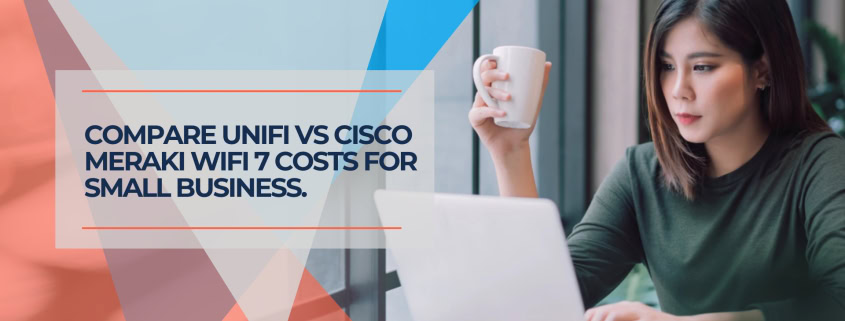


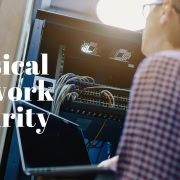
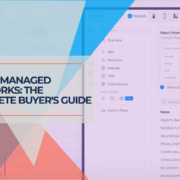


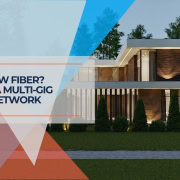
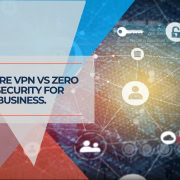


Leave a Reply
Want to join the discussion?Feel free to contribute!